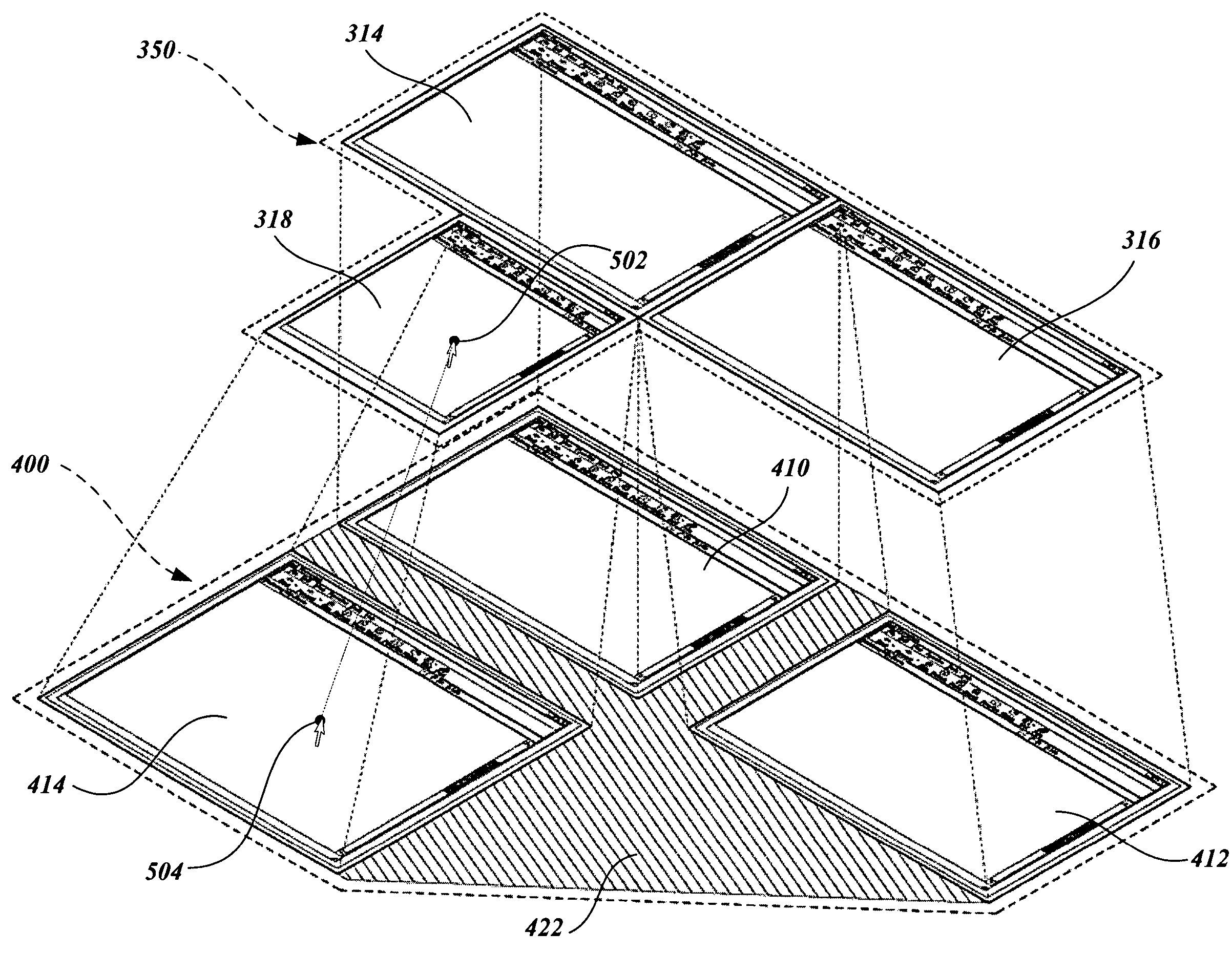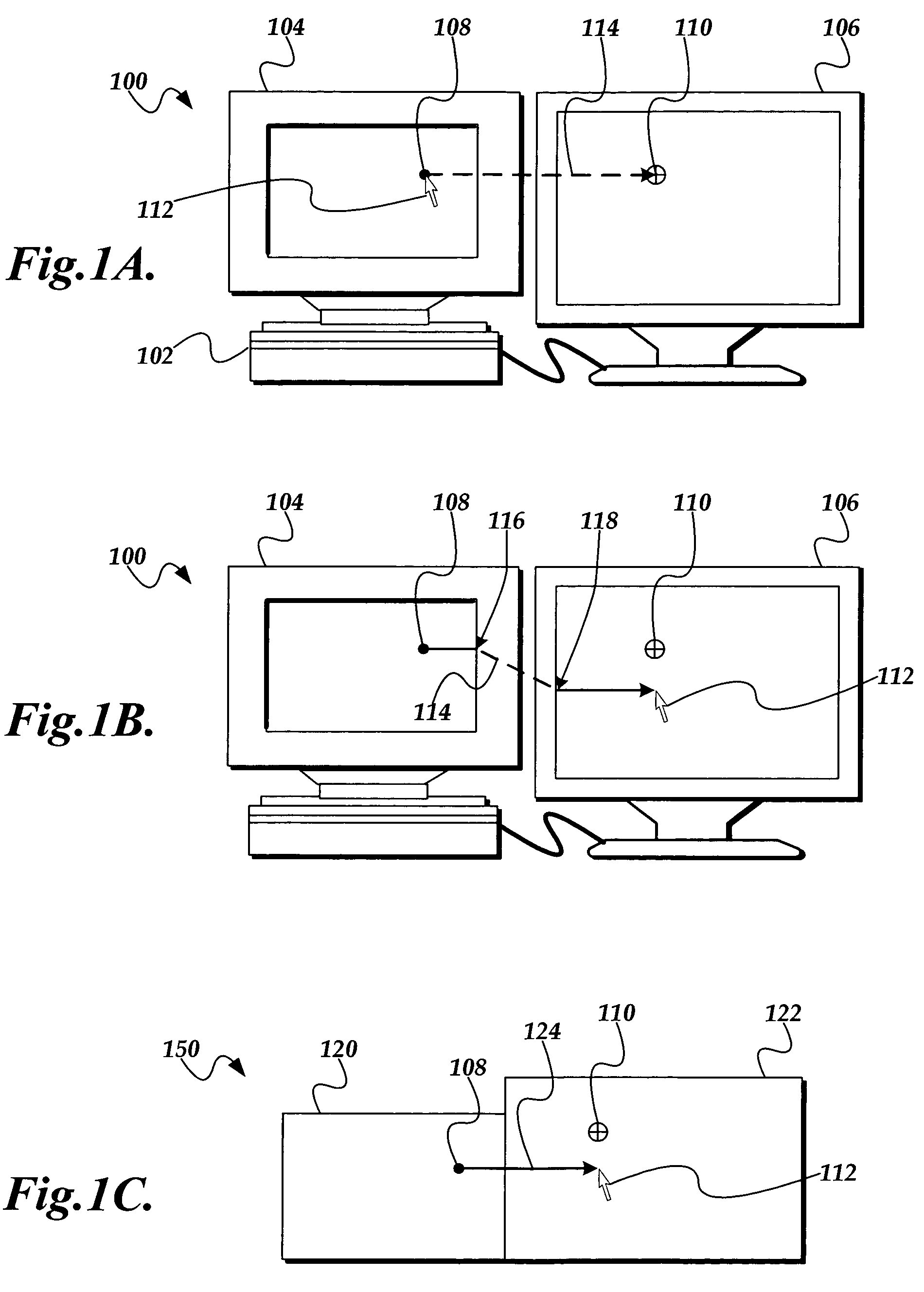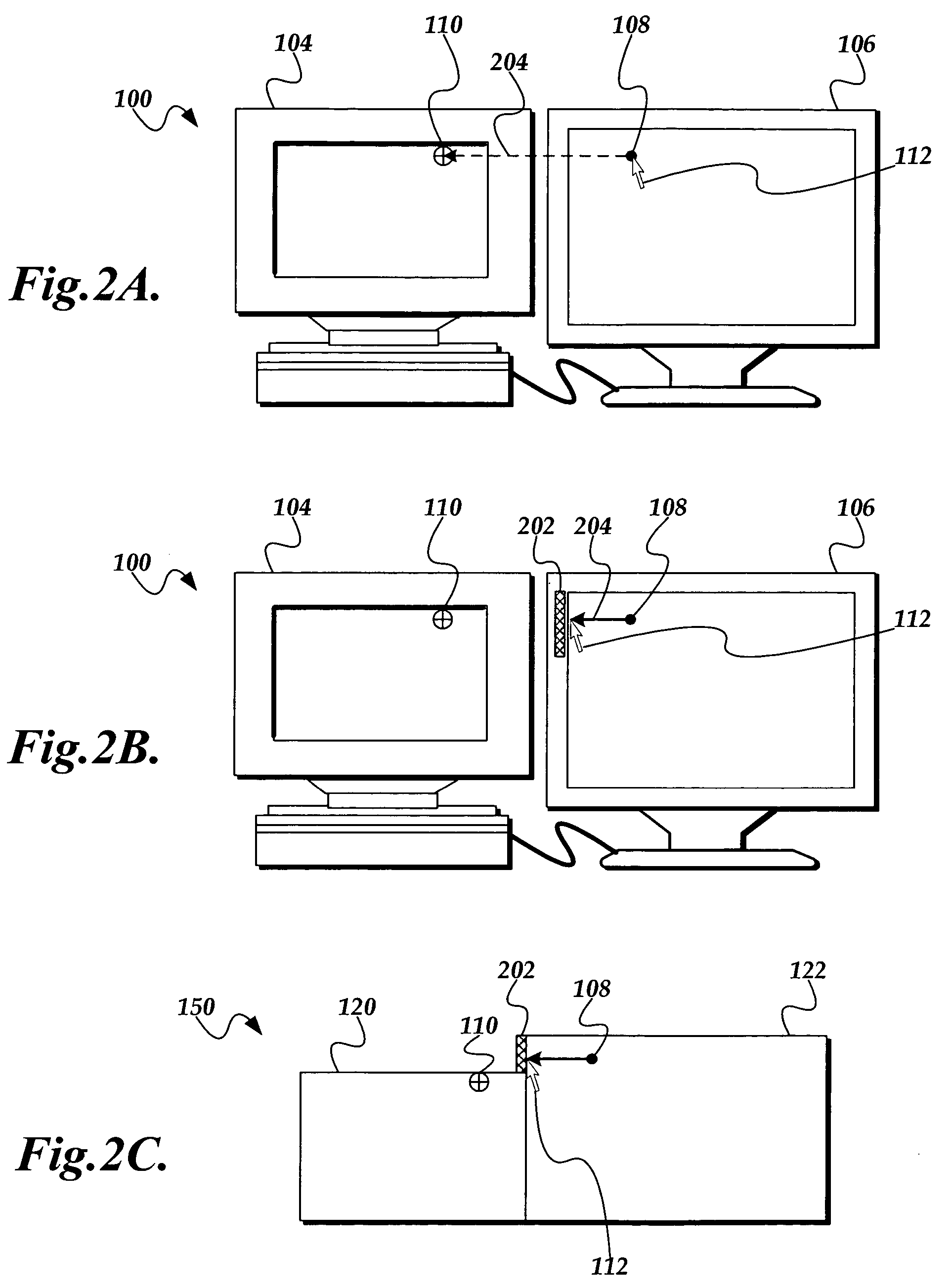Displaying visually correct pointer movements on a multi-monitor display system
a multi-monitor computer system and pointer movement technology, applied in computing, instruments, electric digital data processing, etc., can solve the problems of monitors in multi-monitor computer systems that are frequently dissimilar, monitors in multi-monitor computer systems that are also dissimilar in screen resolution, and the inability to display information across multiple monitors
- Summary
- Abstract
- Description
- Claims
- Application Information
AI Technical Summary
Benefits of technology
Problems solved by technology
Method used
Image
Examples
Embodiment Construction
[0043]In order to enable a multi-monitor computer system to display visually correct pointer movements as the pointer crosses monitor boundaries, a virtual space is created. FIG. 4 is a block diagram illustrating exemplary virtual space 400 for the multi-monitor computer system 300 of FIG. 3A. As its name suggests, the virtual space is a conceptual space that corresponds to the physical arrangement and alignment of monitors in the multi-monitor computer system, as well as differences in screen resolutions, pixel resolutions, and the like as determined in the calibration processes, i.e., determining the relative differences among the monitors, described in the incorporated reference.
[0044]While there are some similarities between the internal display surface 350 and virtual space, there are also many differences. For example, a computer system's internal display surface, such as display surface 350 for computer system 300, includes display areas for each monitor. The virtual space 40...
PUM
 Login to View More
Login to View More Abstract
Description
Claims
Application Information
 Login to View More
Login to View More - R&D
- Intellectual Property
- Life Sciences
- Materials
- Tech Scout
- Unparalleled Data Quality
- Higher Quality Content
- 60% Fewer Hallucinations
Browse by: Latest US Patents, China's latest patents, Technical Efficacy Thesaurus, Application Domain, Technology Topic, Popular Technical Reports.
© 2025 PatSnap. All rights reserved.Legal|Privacy policy|Modern Slavery Act Transparency Statement|Sitemap|About US| Contact US: help@patsnap.com



